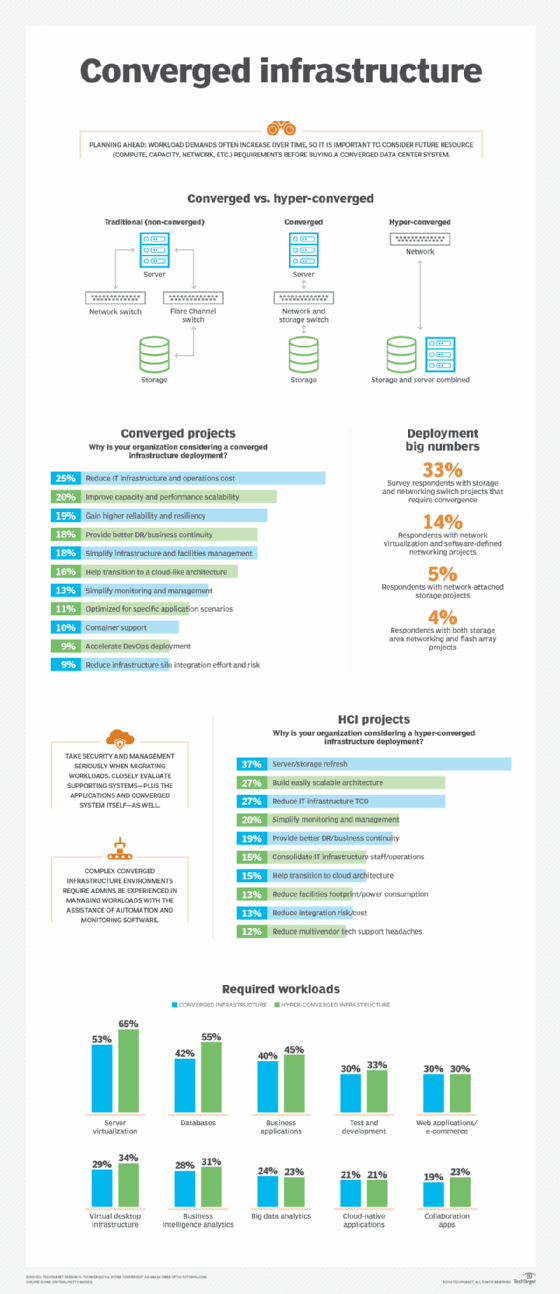Converged vs. hyper-converged infrastructure requirements
Companies considering convergence should compare the features, benefits and limitations of CI and HCI, and look at which workloads drive organizations to data center convergence.

Converged vs. hyper-converged infrastructure: That's the decision many IT leaders make as they look for ways to reduce the cost and complexity of optimizing and maintaining their data centers.
Traditional data centers are often composed of components sourced from a wide variety vendors, which can create deployment, management, support and compatibility issues. But with converged infrastructure (CI), organizations get a standardized, prequalified, turnkey, rack-based appliance packaged and sold by a single vendor.
Hyper-converged infrastructure (HCI) extends this standardization and integration by combining compute, storage and networking components into appliances with a software-defined layer that pools and manages resources. Admins scale HCI by connecting appliances into a cluster of three or more nodes to add more resources.
Converged and hyper-converged infrastructure can help organizations solve similar business problems, but they have significant differences that companies must consider. Compare the features, benefits and limitations of CI vs. HCI; learn why organizations consider each option; and find out which workloads they intend to run in their converged vs. hyper-converged infrastructure endeavors.